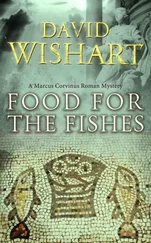Locally common on chalk downs, limestone hills, heaths and moors, chiefly in southeast England and the north. A shrub 1.5–3.5 m (4–12 ft) high – though there is also a prostrate form – with whorls of narrow evergreen leaves. Flowers, small, yellow, at the base of the leaves, appear in May and June. The fruit is a green berry-like cone, appearing in June but not ripening until September or October of its second year, when it turns blue-black.
At the time of ripening, juniper berries are rich in oil, which is the source of their use as a flavouring. They are of course best known as the flavouring in gin, and most of the historical uses have been in one kind of drink or another (though home-grown berries have not been used by British distillers for over a century). Experiment with drinks in which the berries have been steeped. Even gin is improved by, as it were, a double dose.
Uses across Europe are varied. The berries have been roasted and ground as a coffee substitute. In Sweden they are used to make a type of beer, and are often turned into jam. In France, genevrette is made by fermenting a mixture of juniper berries and barley.
Crushed juniper berries are becoming increasingly popular as a flavouring for white meat or game dishes. In Belgium they are used to make a sauce for pork chops. Seal the chops on both sides and place in a shallow casserole. Sprinkle with lemon juice and add parsley, four crushed juniper berries, rosemary, salt and pepper. Arrange peeled and sliced apples over the top and then pour over melted butter. Cook in a medium oven for 30 minutes.
Barberry Berberis vulgaris Trees Scots Pine Juniper Barberry Hop Walnut Beech Sweet Chestnut Oak Hazel Lime Sloe, Blackthorn Wild Cherry Bullace, Damsons and Wild Plums Crab Apple Rowan, Mountain-ash Wild Service-tree Whitebeam Juneberry Medlar Hawthorn, May-tree Elder Oregon-grape
A shrub of hedge and waste places, growing to 3 m (10 ft). It is spiny, with small, toothed oval leaves, yellow flowers and scarlet berries from July.
Because of its spiny branches and brilliant scarlet berries, barberry was once popular as a hedging plant. It was stockproof as well as being ornamental. Then, last century, it was discovered that the foliage was a host of the black rust fungus that could devastate cereal crops, and most bushes growing near arable fields were destroyed. Today barberry is largely confined to hedges in pastureland and to old parks and commons. The berries are strikingly attractive, being brilliant red in colour, oblong in shape and hung in loose clusters all over the bushes. They are usually ready by late August or early September, but check their ripeness by seeing if a berry will burst when squeezed. It is advisable to use scissors and gloves when picking because of the shrub’s long, sharp spines.
Barberry dressing
The berries are juicy and pleasantly tart, and make an excellent jelly with lamb. But it is a shame not to make use of their shape and colour, and the sense they give of being concentrated capsules of juice. Many of the most interesting uses of barberry have been partly decorative. They can be used as a dressing for roast duck – they burst during the cooking and baste the meat with their juice. Mrs Beeton suggests that ‘the berries arranged on bunches of nice curled parsley make an exceedingly pretty garnish for white meats’. Some cooks float the berries on top of fruit salads.
Candied barberries
The berries can be candied for longer storage. Boil sugar to the syrup point, then dip the bunches of barberry into the syrup for 5 hours. Remove the berries, boil the syrup to the candy point and return the berries for a few minutes. Then remove them, and allow to set.

© ImageBroker/Imagebroker/FLPA
© Hartmut Schmidt/Imagebroker/FLPA
Hop Humulus lupulus Trees Scots Pine Juniper Barberry Hop Walnut Beech Sweet Chestnut Oak Hazel Lime Sloe, Blackthorn Wild Cherry Bullace, Damsons and Wild Plums Crab Apple Rowan, Mountain-ash Wild Service-tree Whitebeam Juneberry Medlar Hawthorn, May-tree Elder Oregon-grape
A familiar perennial climber, 3–6 m (10–20 ft) high. Locally frequent in hedges, woodland edges and damp thickets, especially in the southern half of England. Flowers July to August.
The green, cone-like female flowers of the hop have been used in mainland Europe for flavouring beer since the ninth century. Although the plant is a British native, hops were not used for brewing in this country until the fifteenth century. Even then there was considerable opposition to their addition to the old ale recipes, and it was another hundred years before hop-growing became a commercial operation.
Wild hops can be used for home brewing, but a more intriguing and possibly older custom makes use of the very young shoots and leaves, picked not later than May. They may be an ancient wild vegetable, but most of the recipes came into being as a way of making frugal use of the mass of trimmings produced when the hop plantations were pruned in the spring.
The shoots can be chopped up and simmered in butter as a sauce, added to soups and omelettes, or, most popularly, cooked like asparagus. For the latter, strip the young shoots of the larger leaves, tie them in bundles and soak in salt water for an hour, drain and then plunge into boiling water for a few minutes until just tender. Serve with molten butter.
Hop frittata
Frittata is an Italian recipe that can be used with many of the green-stem wild vegetables in this book – for example, asparagus, wild garlic, thistles and bramble shoots. A frittata should be much more solid than an omelette, and can be served hot or cold.
2 handfuls of hop shoots
1 small onion
4 eggs
1 dsp dried breadcrumbs
1 dsp parmesan cheese
Parsley
• Beat the eggs with seasoning to taste, and with the breadcrumbs and parmesan cheese. Chop the hop shoots into roughly 5 cm (2 inch) lengths and fry with the chopped onion in a little olive oil in a heavy pan until they have both begun to brown.
• Add the beaten egg mixture and simmer over a low heat. In about four or five minutes the frittata should have set.
• Take a large plate, cover the pan and turn over so that the frittata settles onto it, slide it back into the pan, and simmer until the other side is brown.
Walnut Juglans regia Trees Scots Pine Juniper Barberry Hop Walnut Beech Sweet Chestnut Oak Hazel Lime Sloe, Blackthorn Wild Cherry Bullace, Damsons and Wild Plums Crab Apple Rowan, Mountain-ash Wild Service-tree Whitebeam Juneberry Medlar Hawthorn, May-tree Elder Oregon-grape

Deciduous tree, up to 30 m (100 ft) high, with grey, fissured bark. Leaves are odd-pinnate, with 5 to 9 leaflets. Catkins followed by flowers. Nuts ripen in September.
The walnut is a native of southern Europe, introduced to this country some 500 years ago for its wood and its fruit. Although not quick to spread outside cultivation, there are some self-sown trees in warm spots in the south, and nuts can be carried away from the parent trees by birds and mammals.
Walnuts are best when they are fairly ripe and dry, in late October and November. Before this, the young ‘wet’ walnuts are rather tasteless. If you wish to pick them young, do so in July whilst they are still green and make pickle from them. They should be soft enough to pass a skewer through. Prick them lightly with a fork to allow the pickle to permeate the skin, and leave them to stand in strong brine for about a week, until they are quite black. Drain and wash them and let them dry for two or three days more. Pack them into jars and cover them with hot pickling vinegar. Seal the jars and allow to stand for at least a month before eating.
Читать дальше














